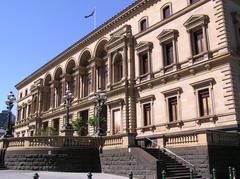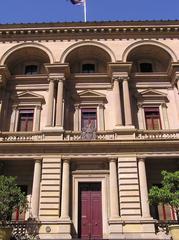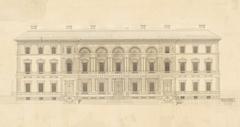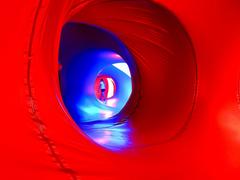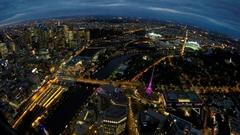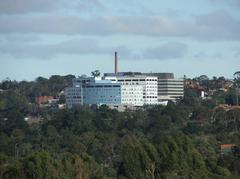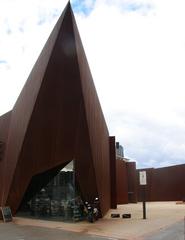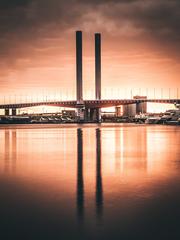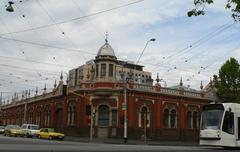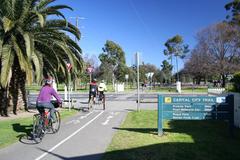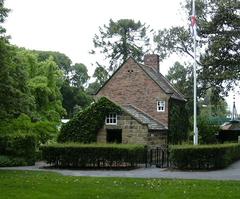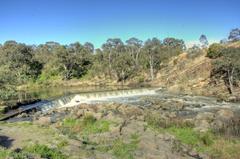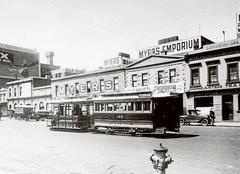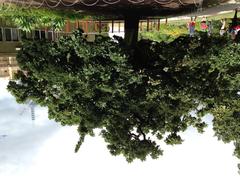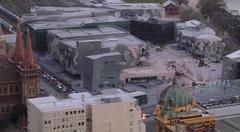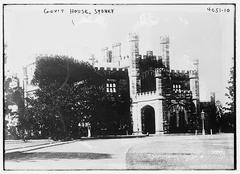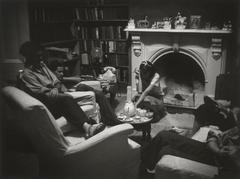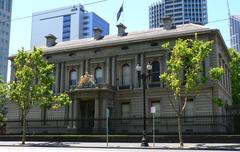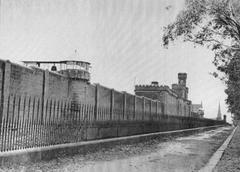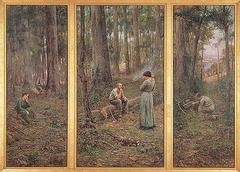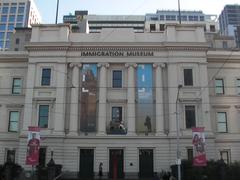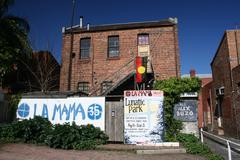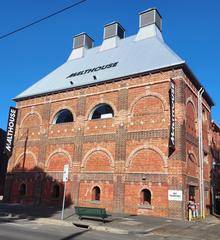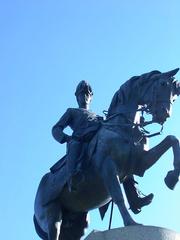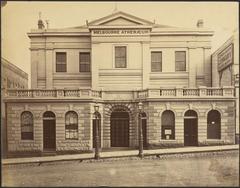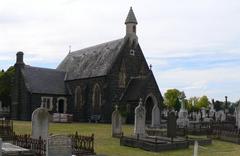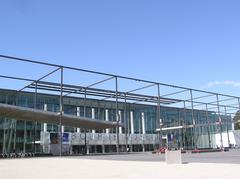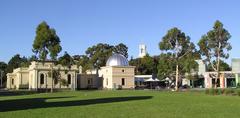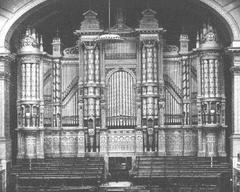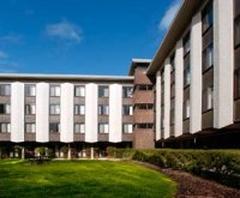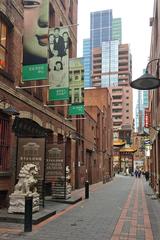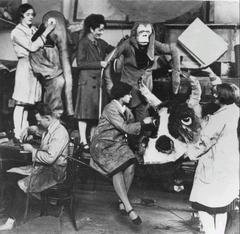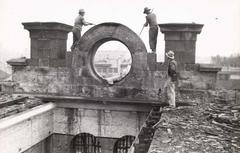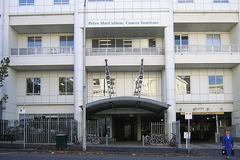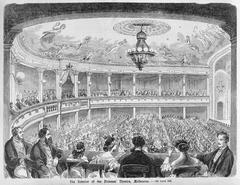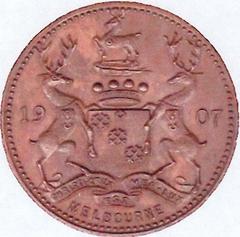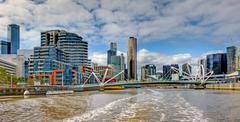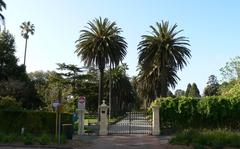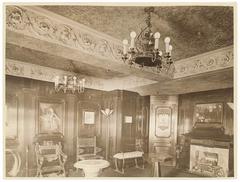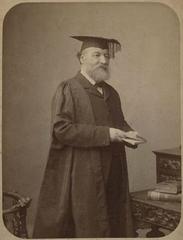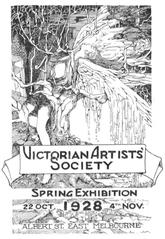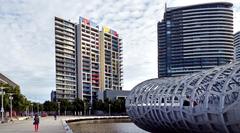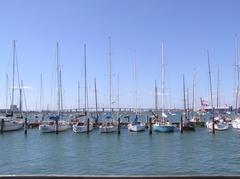
Old Treasury Building Melbourne: Visiting Hours, Tickets, Accessibility & Historical Guide
Date: 14/06/2025
Introduction
The Old Treasury Building, located at the eastern end of Collins Street in Melbourne, is a renowned icon of Victorian architecture and a testament to the city’s dynamic past. Built between 1858 and 1862 during the height of the Victorian gold rush, this Renaissance Revival structure was designed by John James Clark to serve as Victoria’s treasury and safeguard the colony’s newfound wealth. Today, it operates as a living museum, welcoming visitors to explore immersive exhibitions, historical collections, and the grand interiors that once formed the heart of colonial governance.
This guide provides everything you need to plan your visit, including up-to-date information on opening hours, ticketing, accessibility, transport options, exhibitions, and tips for an enriching museum experience. Whether you are a history enthusiast, architecture admirer, or first-time visitor, the Old Treasury Building offers a unique window into Melbourne’s heritage and cultural evolution (Old Treasury Building History; Wikipedia; Victorian Collections; What’s On Melbourne).
Historical Overview and Significance
Origins and Gold Rush Context
The Old Treasury Building’s history is deeply intertwined with the Victorian gold rush of the 1850s. The discovery of gold rapidly transformed Melbourne, driving dramatic economic growth and population expansion. To manage and protect this sudden wealth, the colonial government commissioned the construction of a robust treasury building with secure gold vaults and administrative offices (Old Treasury Building History; Wikipedia).
Architectural Design
John James Clark, then just 19 years old, designed the building in the Renaissance Revival style popular in nineteenth-century civic architecture. The structure features Bacchus Marsh sandstone, bluestone foundations, and a symmetrical façade with classical Doric, Ionic, and Corinthian elements. Its grand entrance, colonnaded arcade, and meticulously detailed window surrounds make it one of Australia’s most notable public buildings from the era (Victorian Collections; What’s On Melbourne).
Construction and Early Functions
Construction began in 1858 and concluded in 1862, employing advanced building technologies of the time such as Cooper’s fireproof flooring and steam-powered machinery. While the gold rush had subsided by completion, the building’s vaults were repurposed for secure government storage, and its upper floors housed the offices of critical colonial officials, the Executive Council Chamber, and the Governor’s rooms (Old Treasury Building History; Wikipedia).
Evolution and National Role
By 1878, the building’s treasury functions moved to new facilities, and it became known as the “Old Treasury.” It continued to play a central role in state governance and, after Federation in 1901, hosted the National Executive Council and pivotal meetings shaping Australia’s early national government (Wikipedia).
Architectural & Cultural Heritage
The Old Treasury Building is celebrated internationally as one of the finest examples of nineteenth-century public architecture in Australia. Many original features, including the Executive Council Chamber and period furnishings, remain in use. The building is listed on the Victorian Heritage Register and stands as an enduring symbol of Melbourne’s civic identity (Victorian Collections).
Visiting the Old Treasury Building: Hours, Tickets, and Accessibility
Address
20 Spring Street, Melbourne, VIC 3000
Opening Hours
- Sunday to Friday: 10:00 am – 4:00 pm
- Closed on Saturdays
- Special Closures: Check the official website for public holiday changes.
Admission
- General Entry: Free, self-guided access to all permanent and most temporary exhibitions.
- Guided Tours: Available on the last Sunday of each month for $15 per person. Advance booking is required (Public Tours).
- Group and School Tours: Available by arrangement; fees apply.
Donations are welcome to help support exhibitions and public programs.
Accessibility
The Old Treasury Building is committed to providing an inclusive and accessible environment:
- Wheelchair Access: Step-free entry, lifts to all public floors (Old Treasury Building - Visit Us)
- Accessible Toilets: On-site
- Seating: Benches throughout galleries
- Assistance Animals: Welcome throughout the museum
- Hidden Disabilities Sunflower Program: Trained staff are available to assist visitors wearing sunflower lanyards (Hidden Disabilities Support)
- Quiet Spaces: Calm, well-signed areas for those preferring low-stimulation environments
- Easy-Read Materials: Staff and volunteers provide information and assistance (Seniors in Melbourne Review)
Getting There
Public Transport
- Train: Short walk from Parliament Station
- Tram: Routes along Collins and Bourke Streets
- Bus: Various routes stop nearby
- Myki Card: Required for Melbourne’s integrated transport network (Melbourne Public Transport)
Parking
- Metered Street Parking: Limited and fills quickly
- Accessible Parking: Available nearby for permit holders (Accessibility in Melbourne)
Taxi and Rideshare
- Accessible vehicles can be pre-booked (Accessible Taxis)
Exhibitions and Visitor Experience
Permanent and Rotating Displays
The museum’s exhibitions draw from the archives of the Public Record Office Victoria and other cultural collections, exploring Melbourne’s social, political, and economic transformations. Highlights include:
- “Making Modern Melbourne” – Traces the city’s growth from a colonial outpost to a modern metropolis (Public Record Office Victoria)
- “Belongings: Objects of a Family Life” – Showcases personal stories of migration and settlement
- “Protest Melbourne” – Documents the city’s rich history of activism
- “Yarra: Stories of Melbourne’s River” – Explores the river’s environmental and cultural significance (Visit Melbourne)
- “First Peoples and the Gold Rush” – Examines the gold rush’s effects on Aboriginal communities
- “Melbourne: Foundations of a City” – Features the city’s architectural and governmental origins
Guided Tours
Expert-led tours provide exclusive access to restricted areas and in-depth insights into the building’s history, architecture, and collections. Guided tours are held on the last Sunday of each month and require advance booking (Tour Bookings).
Group and School Visits
Curriculum-linked educational programs, interactive workshops, and tailored tours are available for schools and groups (School Tours).
Digital Resources
Virtual tours, online exhibitions, and downloadable educational content are available for remote or pre-visit exploration (Public Record Office Victoria).
Facilities and Amenities
- Information Desk: Friendly staff and knowledgeable volunteers
- Printed Guides: Free at entrance
- Restrooms: Accessible toilets on site
- No Onsite Café: Numerous dining options nearby
- Gift Shop: Books and souvenirs available
- Baby-Changing Facilities: Onsite
- Lockers: Limited; travel light if possible
Visitor Tips
- Plan Ahead: Check the official website for current exhibitions, events, and closures
- Arrive Early: Weekday mornings are quieter
- Book Tours Early: Popular guided tours often sell out
- Use Public Transport: Recommended due to limited parking
- Photography: Allowed in most areas for personal use without flash or tripods
Nearby Attractions
Combine your visit with other key Melbourne historical sites:
- Parliament House of Victoria
- Fitzroy Gardens
- Melbourne Cricket Ground
- State Library of Victoria
- Royal Exhibition Building
- Treasury Gardens
Frequently Asked Questions (FAQ)
Q: Is the Old Treasury Building free to enter?
A: Yes, general entry is free. Guided tours require a $15 ticket.
Q: When is the museum open?
A: Sunday to Friday, 10:00 am – 4:00 pm. Closed Saturdays and some public holidays.
Q: Are guided tours accessible?
A: Yes, but advance booking is required and visitors should notify staff of any mobility needs.
Q: Can I take photos?
A: Yes, personal photography is permitted in most areas; flash and tripods are not allowed.
Q: Are assistance animals welcome?
A: Yes, certified assistance animals are permitted throughout.
Q: What public transport options are closest?
A: Parliament Station (train), Collins Street trams, and nearby bus routes.
Cultural Acknowledgement
The Old Treasury Building stands on the unceded land of the Wurundjeri Woi Wurrung people of the Kulin Nation. The museum and the City of Melbourne pay respect to Traditional Custodians, their Elders past, present, and emerging (Cultural Acknowledgement).
Contact and Further Information
- Website: www.oldtreasurybuilding.org.au
- Phone: +61 3 9651 2233
- Email: [email protected]
For accessibility, transport, and visitor tips, see the City of Melbourne Accessibility Guide and the Old Treasury Building’s Visit Us page.
Plan Your Visit
Experience Melbourne’s history firsthand at the Old Treasury Building—an essential destination for anyone interested in the city’s past, architecture, and culture. For the latest details on exhibitions, events, and accessibility, visit the official website, follow on social media, and consider downloading the Audiala app for an enhanced museum tour.
Sources
- Old Treasury Building History
- Old Treasury Building, Melbourne, Wikipedia
- Old Treasury Building, Victorian Collections
- Old Treasury Building, What’s On Melbourne
- Visiting the Old Treasury Building Melbourne: Hours, Tickets & Historical Insights
- Old Treasury Building Melbourne: Visiting Hours, Tickets, Exhibitions, and Visitor Guide, Public Record Office Victoria
- Old Treasury Building Visiting Hours, Tickets, and Accessibility Guide, City of Melbourne and Old Treasury Building Official Site
